Copyright of all images and all text on this web site belongs to Bryan Benn
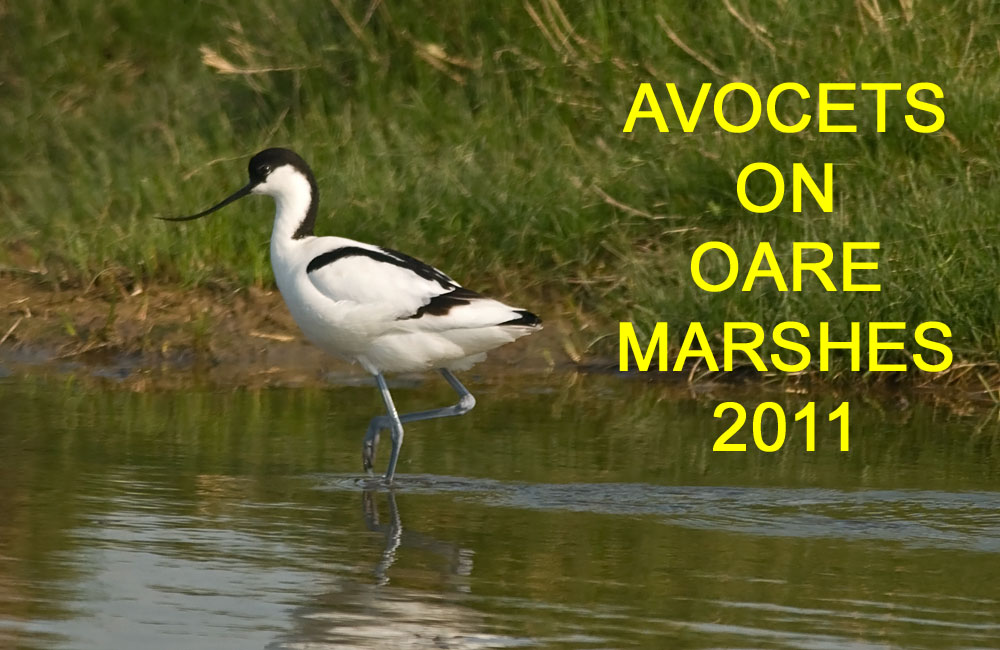
To me, just about the loveliest wader there is. But little did I know on 24th April 2011 that I would be following the progress of this Avocet as, along with it's mate, it set up a nest very close to the road and viewing area on the excellent Kent Wildlife Trust Oare Marshes Reserve in Kent.
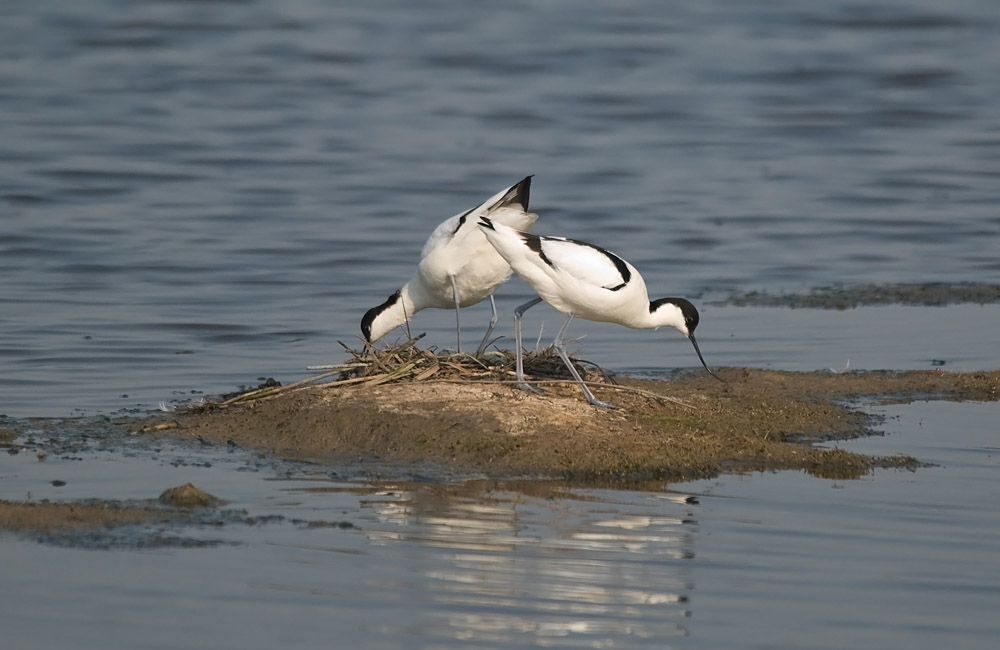
24th April. I was told later that it had been some time since Avocets had raised young at Oare Marshes. But by now there were already other pairs out of what would eventually become a circa 200 strong flock with many also building and caring for nests on the Reserve.
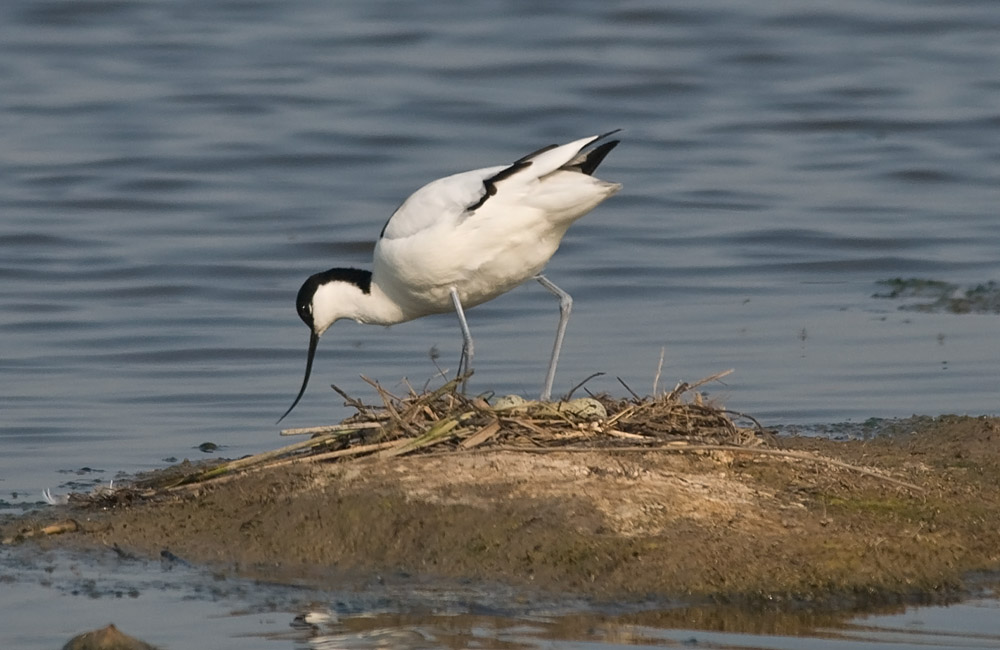
24th April. Two of the four eggs are visible as one of the adults prepares to take a turn on the nest. Avocets are Schedule I protected birds, but these two were happy to build a nest very close to the road and a proper viewing area that became increasingly popular as time went by. A public viewing area that was my one and only photographic viewpoint for these birds for eleven weeks.

25th April. The Avocets never showed a moments concern for any of the very many people who stopped close by to watch their activities. But if you were any other species, large or small, then one of the adults was immediately airborne.
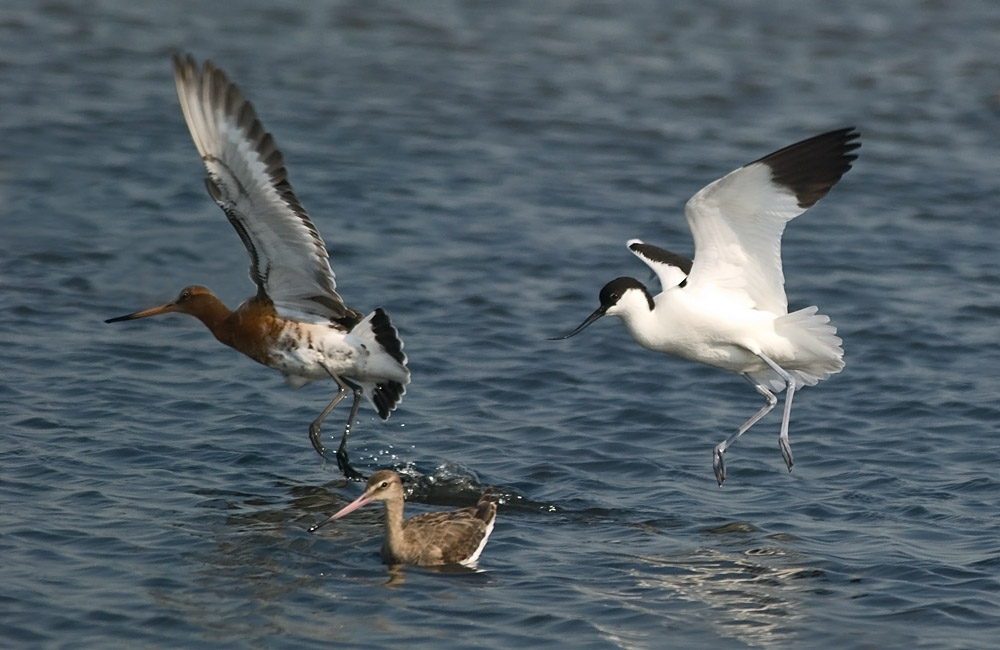
25th April. Airbone to see off anything that dared to come close to their nest! In this case a Black Tailed Godwit.
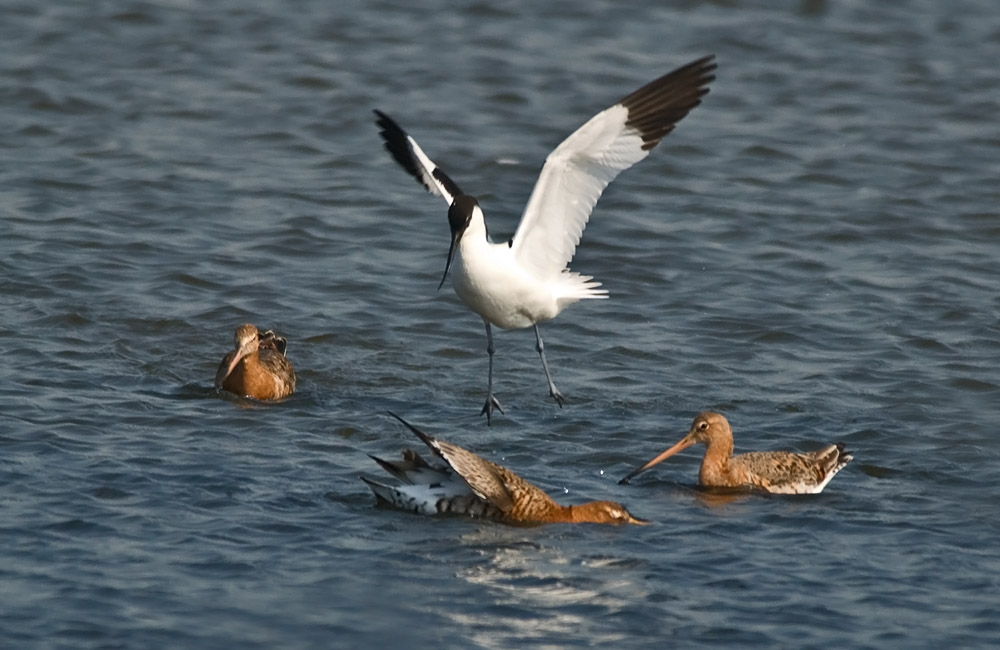
25th April. It almost looks like the Avocet is jumping up and down on this Black Tailed Godwit. And from my many observations I really believe they would have gone that far if needed in the incredible defence they put up of their nest, and later of their young.
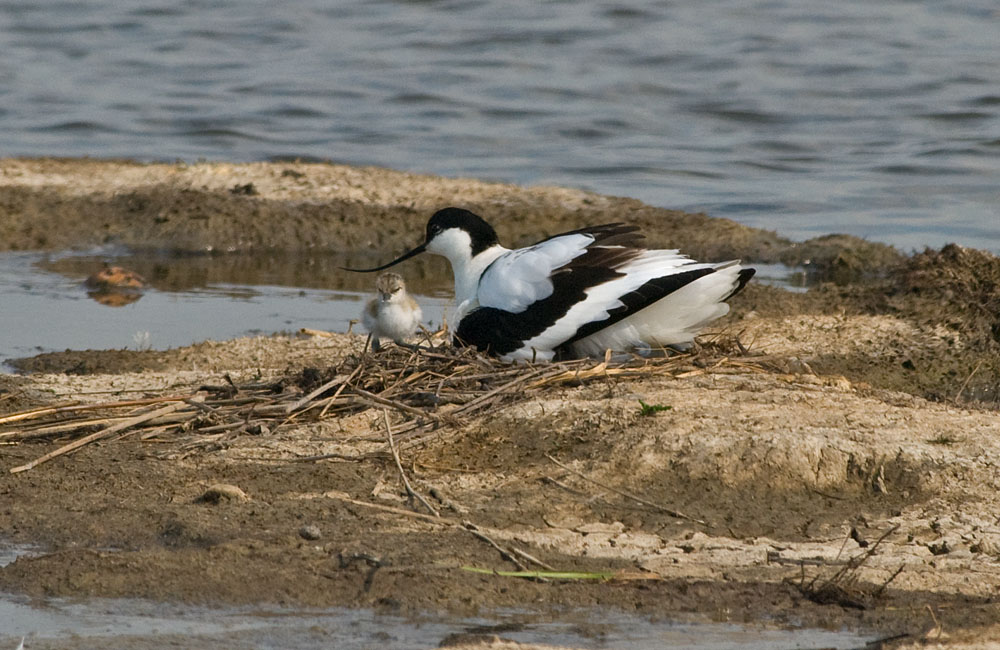
19th May. More than three weeks later I returned to Oare to see that the two adult Avocets were caring for young chicks.
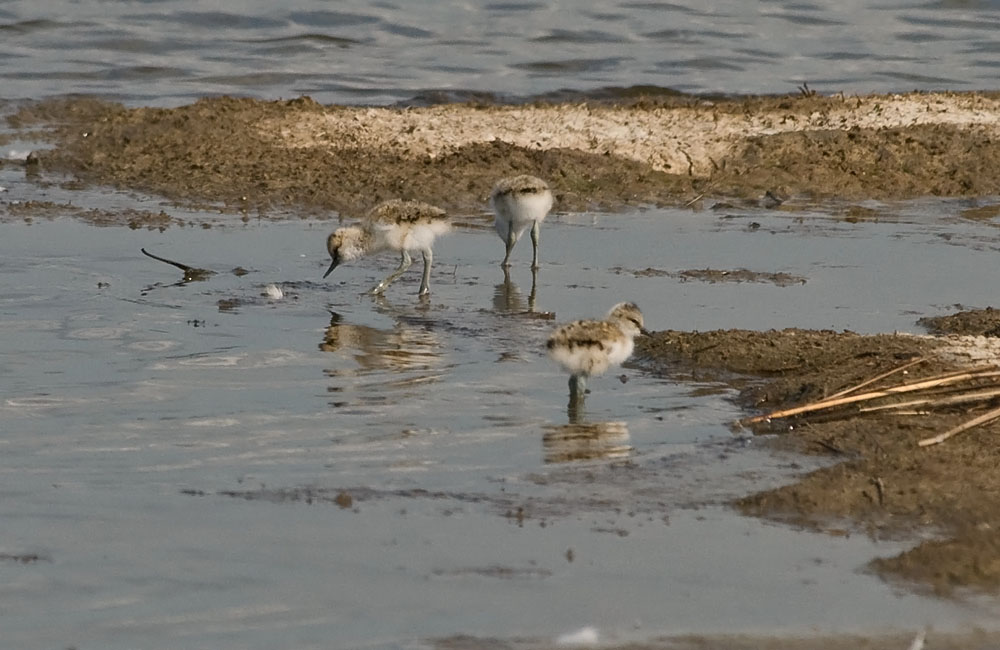
19th May. At this point three of the four eggs had hatched, with the fourth to follow soon. In this view the chick nearest the camera is just three hours old. And has already left the nest to start to feeding itself.
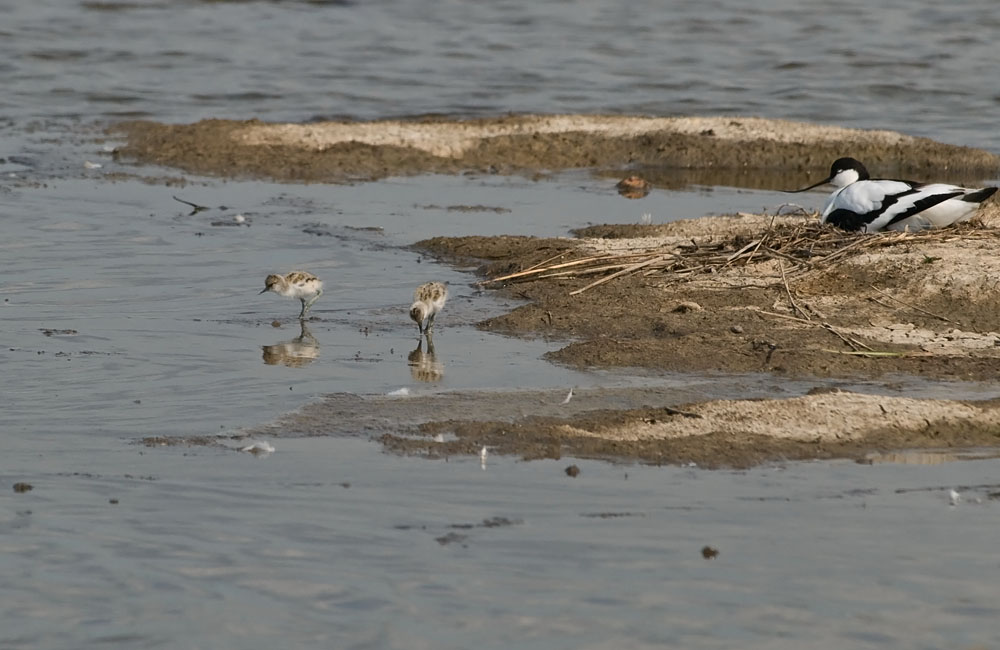
19th May. Two chicks feeding under the watchful eye of one of the adults. The second adult never went far from the nest and young, with swap-overs occuring quite regularly to allow both the older birds to feed.
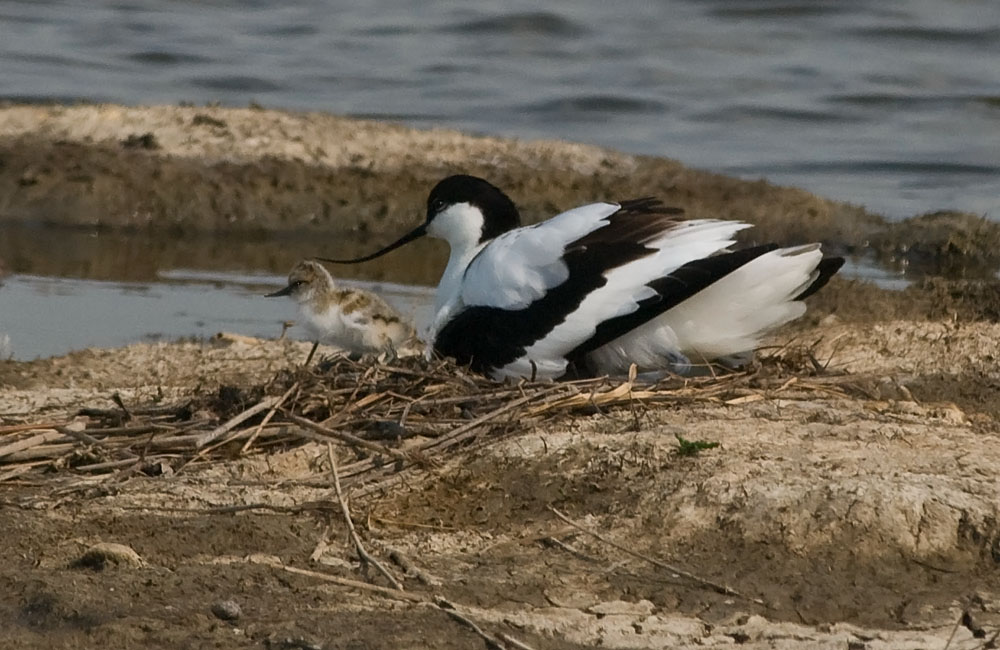
19th May. At this stage the chicks did not wander at all far from the nest and adults.
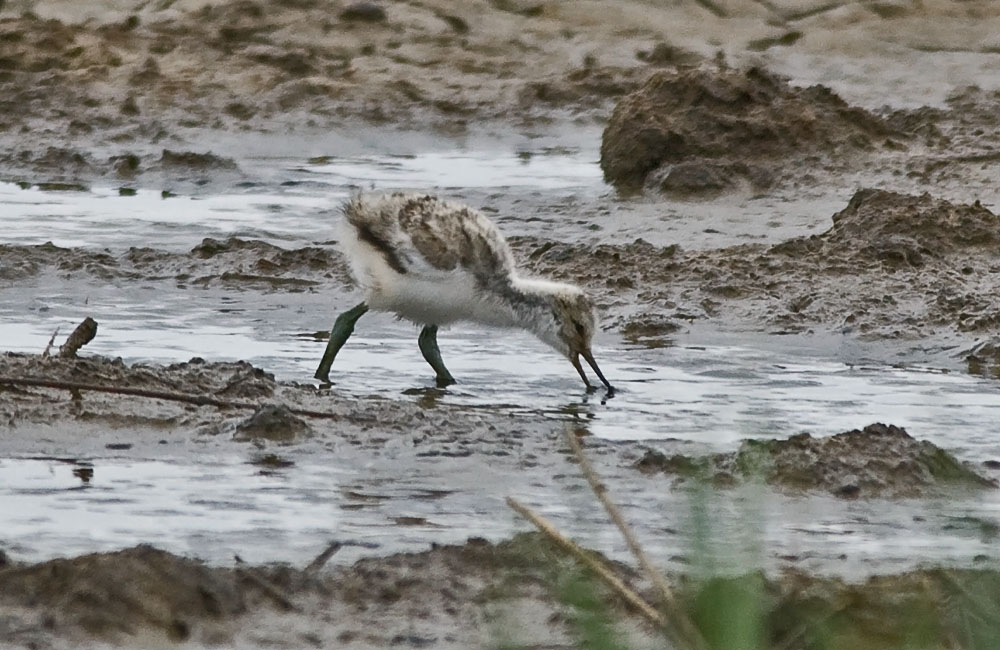
28th May. Just nine days later and with all four eggs hatched, the young Avocets are starting to forage for food a little further away from the adults.
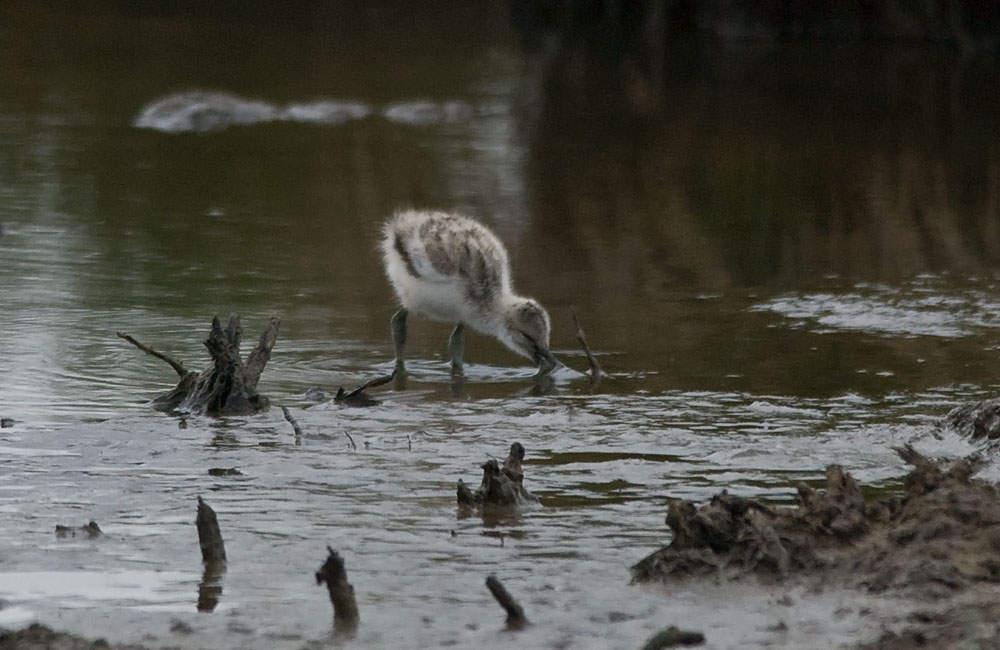
28th May.
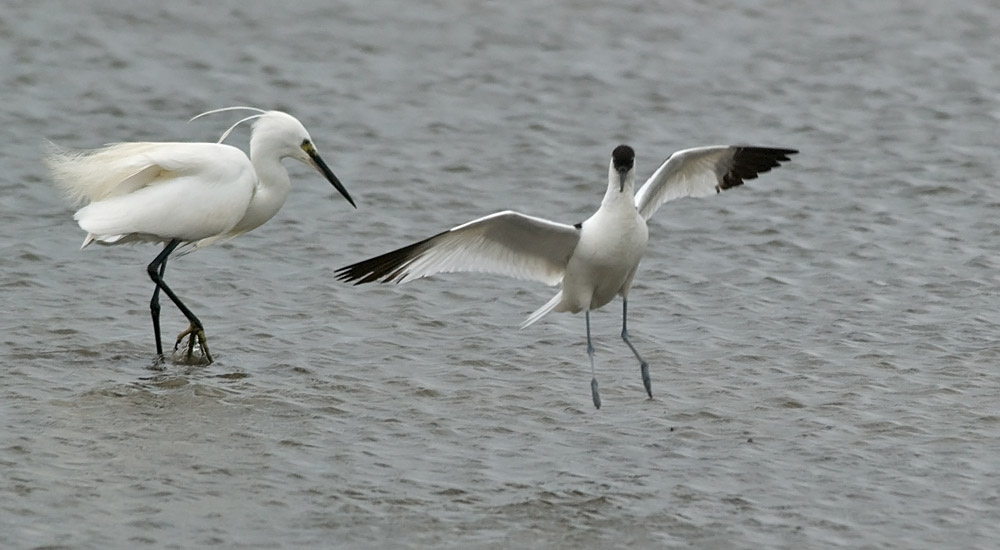
28th May. Not long after the chicks hatched a Little Egret took up residence close by. Causing a significant reaction from the Avocet adults. But the Little Egret stood it's ground, as here where the adult Avocet returns from an unsuccessful attempt at getting the larger bird to leave. The Avocets did in the end partially accept it's presence, which they never did to any other bird that I saw. But they were always very alert and very noisy when it started to approach their chicks, and would walk parallel with it, and between it and their offspring to ensure no harm was done.
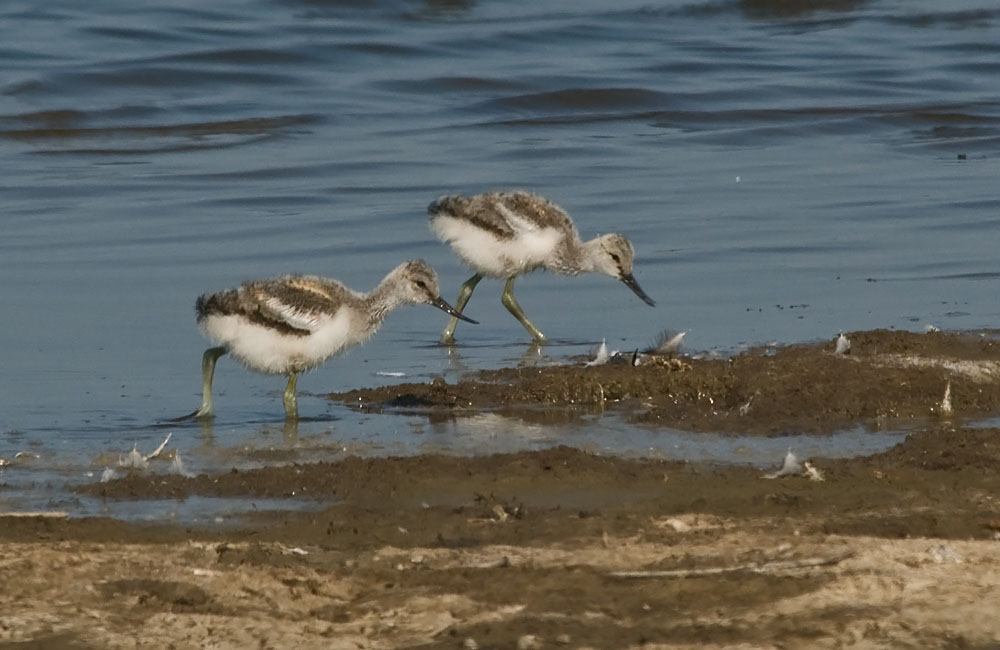
2nd June. Into June and the growth in the chicks is very noticeable. Whilst the feathers indicate something has been predated here, it wasn't one of the "roadside four" Avocet chicks.
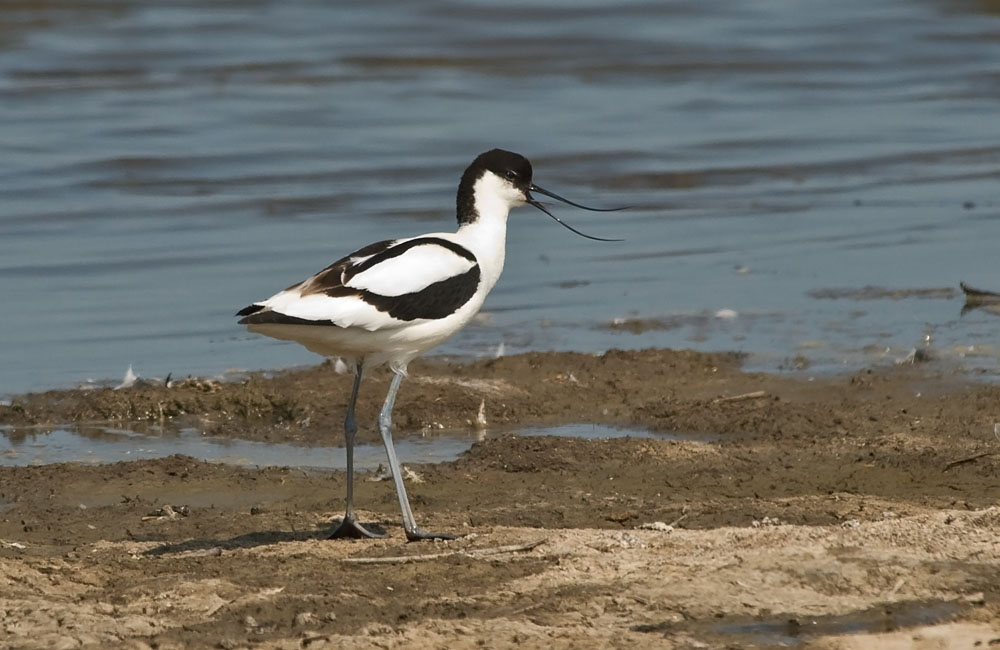
2nd June. And it is no surprise the four young have survived this far into their lives, as one of their very attentive parents spots more intruders who are going to need to be chased off.
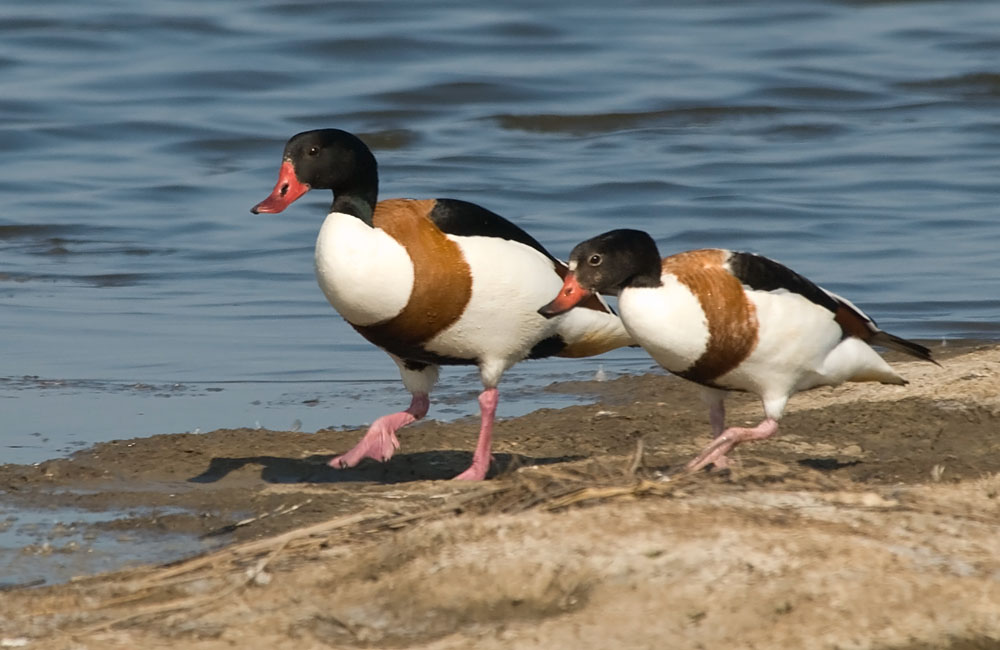
2nd June. This time it's a couple of Shelducks who have wandered too close to the Avocets and their young. But anything from a Little Grebe upwards would get the same treatment from the adult Avocets.
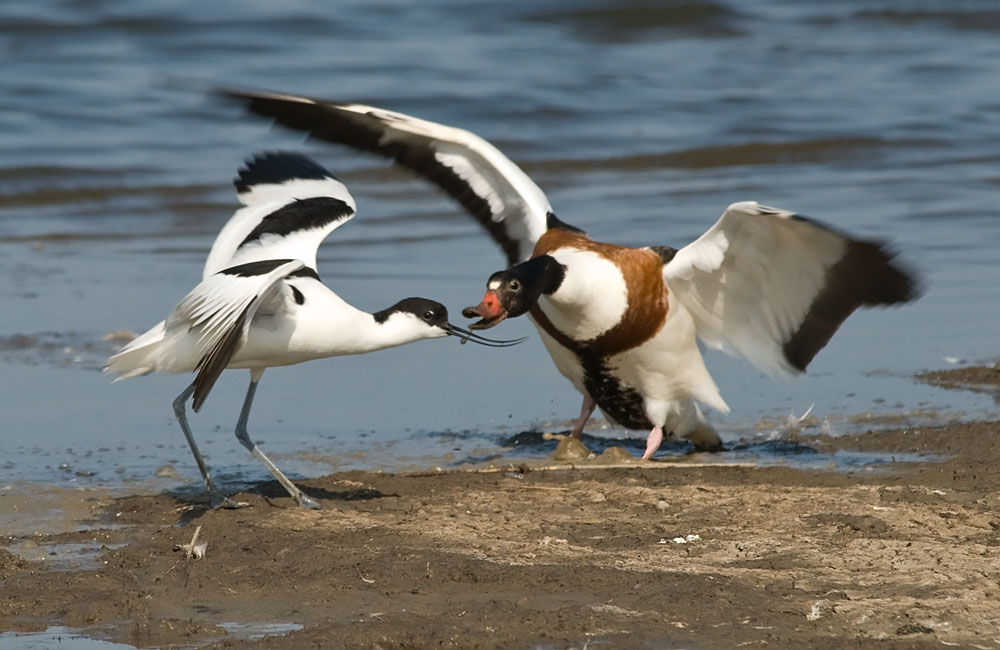
2nd June. Size or actual threat to the young was irrelevant. Too close and they all got the same confrontation from the Avocet parents. On the water, or in the air. It didn't matter where they came from or what size they were. I even saw both adults confront a fox on a not that close grassy bank on one occasion! Yet dogs being walked up the much closer road by the viewing point were ignored.
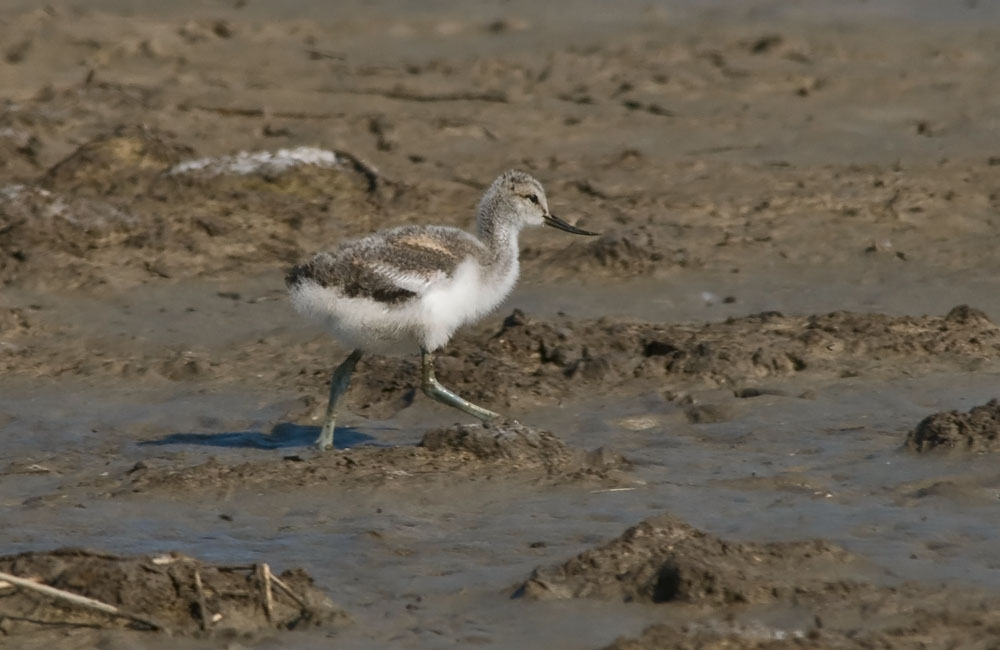
2nd June. "I'll just wander off and find somewhere else to eat while all that comotion is going on".
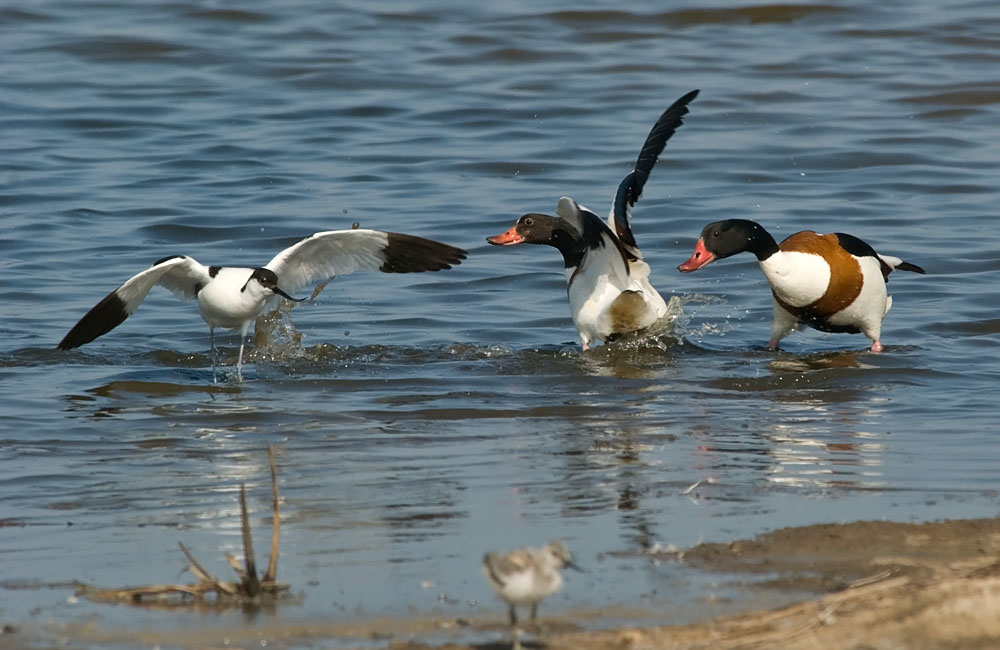
2nd June. And a comotion it often was. In this case with one of the chicks still close by.
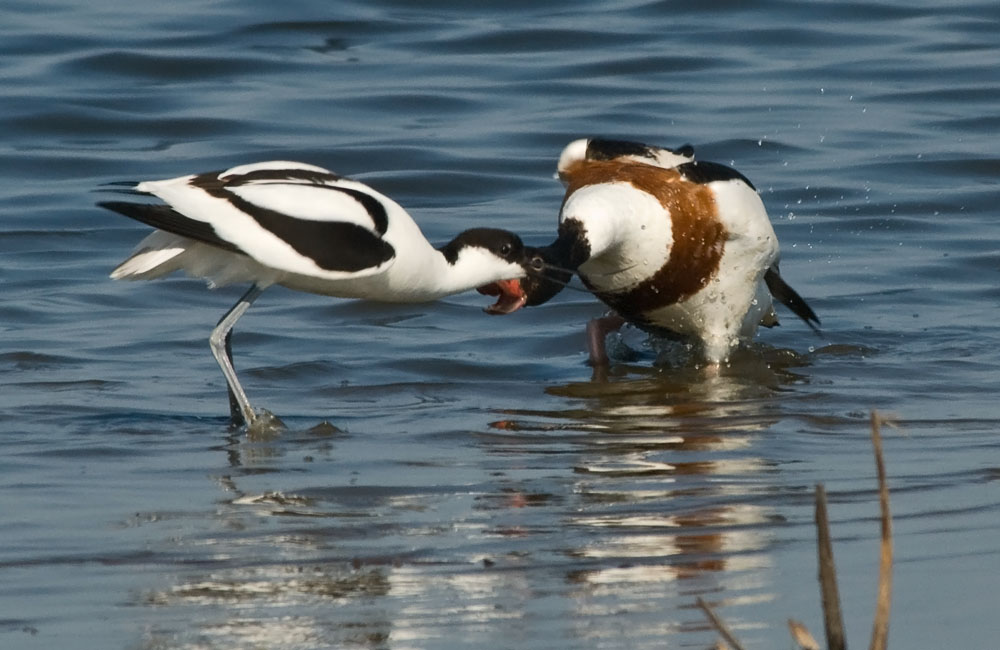
2nd June. The conflict goes head to head. The only time I saw the Avocets fail to chase off an intruder was with the Little Egret mentioned earlier, whose territory was adjacent to the Avocets. They ended up with some sort of reluctant understanding that they would keep a little distance away from each other.
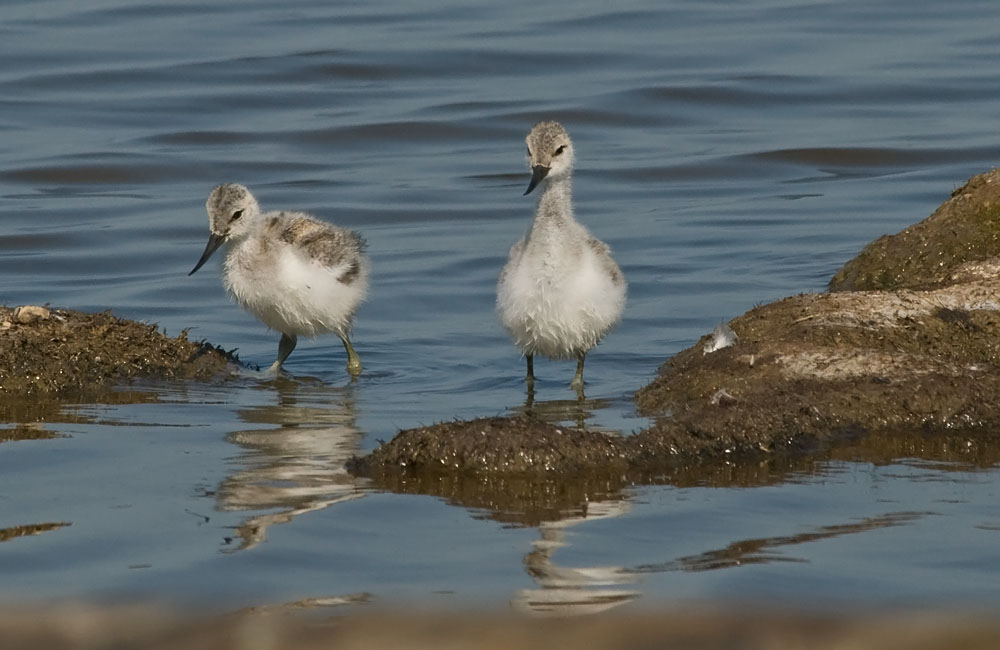
2nd June. "Wow. Mums chased those Shelducks off again"
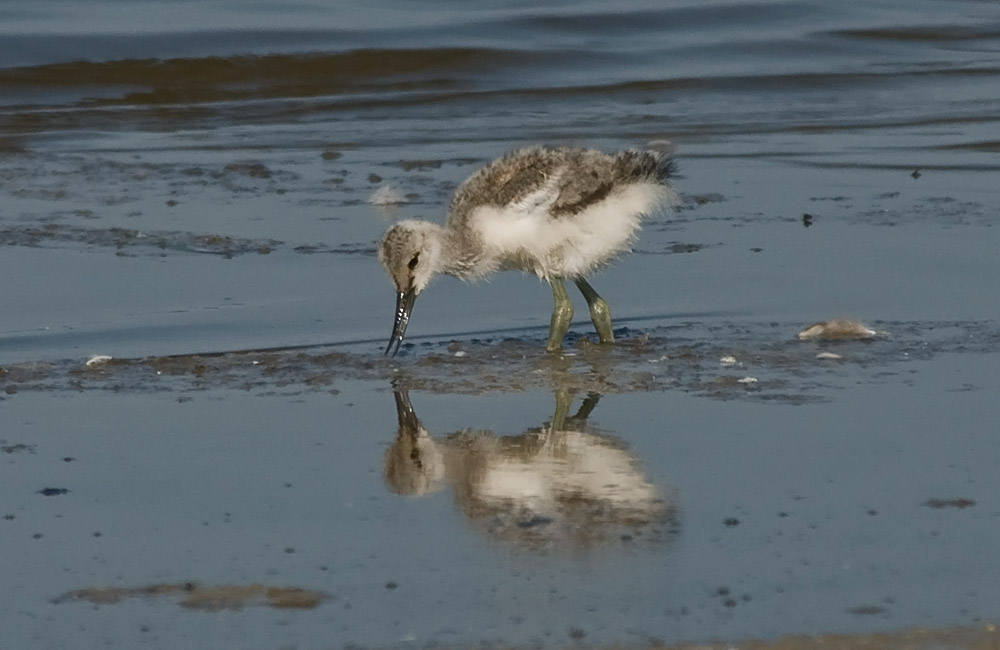
2nd June. And this youngster reflects on what a lovely protective mum it's got. Whilst continuing to eat.
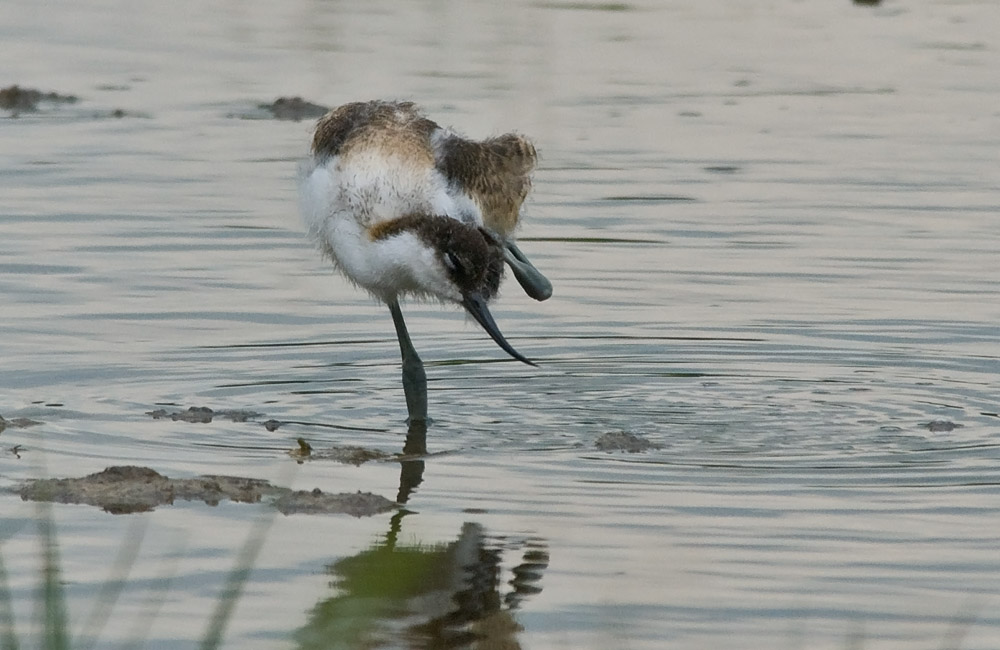
11th June. Nine days later and the Chicks' rapid growth continues. Constant eating only stopped when a good scratch was needed.
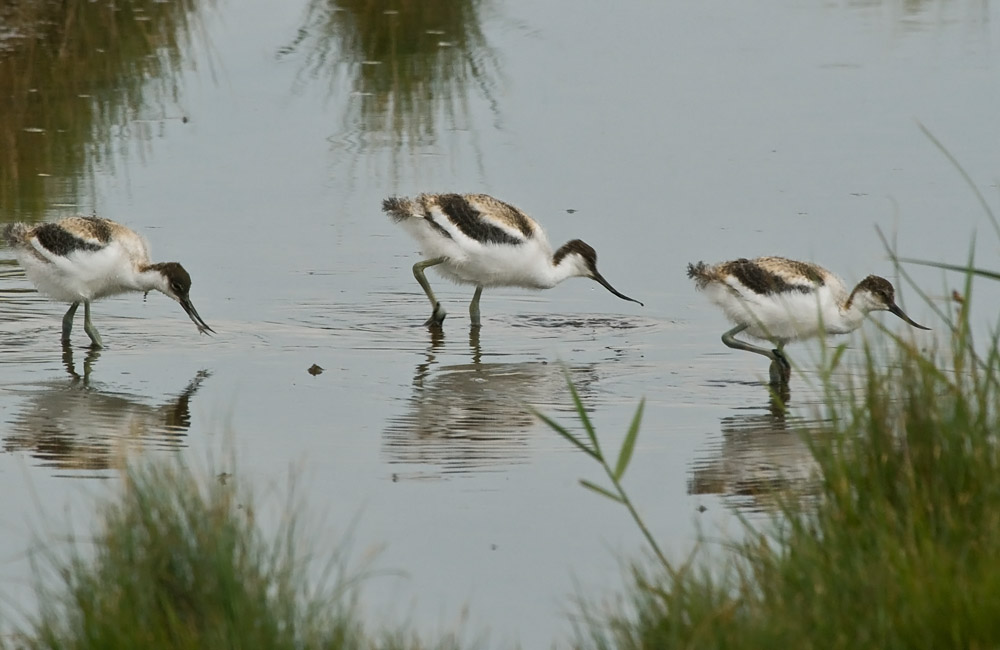
11th June. Three chicks playing follow my leader. During all my observations they never strayed that far from the nesting area which the adults kept using as a sort of base. And whilst the chicks did eat on their own from time to time, they often got back together again. I didn't see it, but I suspect that both adults and all four chicks roosted together at night.
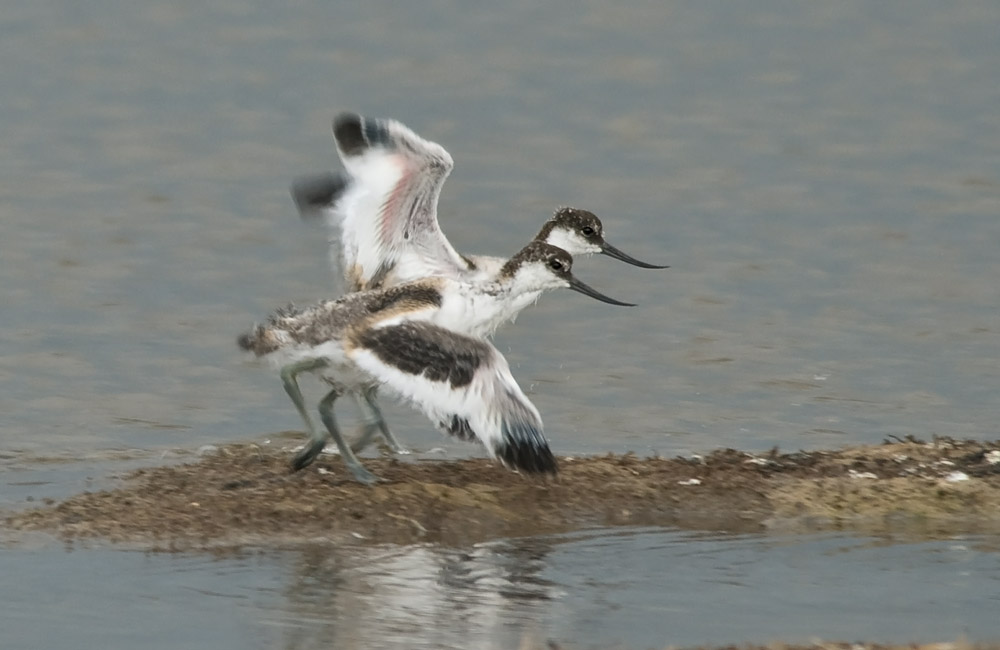
11th June. 23 days from at least one of them hatching, and the first time I saw them start to flap their wings as purposefully as this.
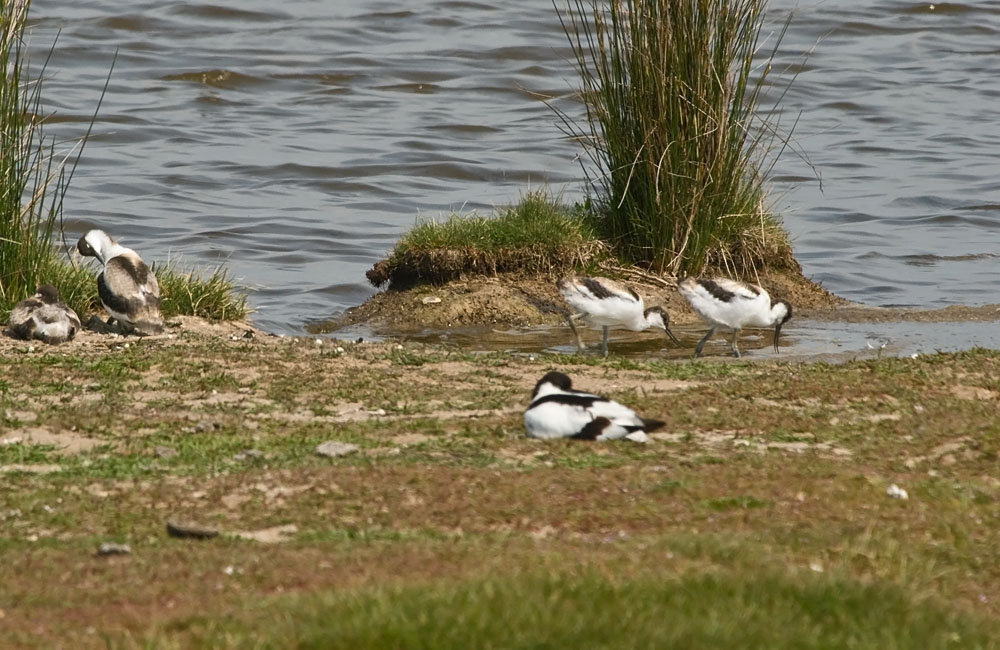
14th June. Mid June and I was able to photo all four Juveniles together. Getting older and bigger they may be, but an adult was always close by to watch over them.
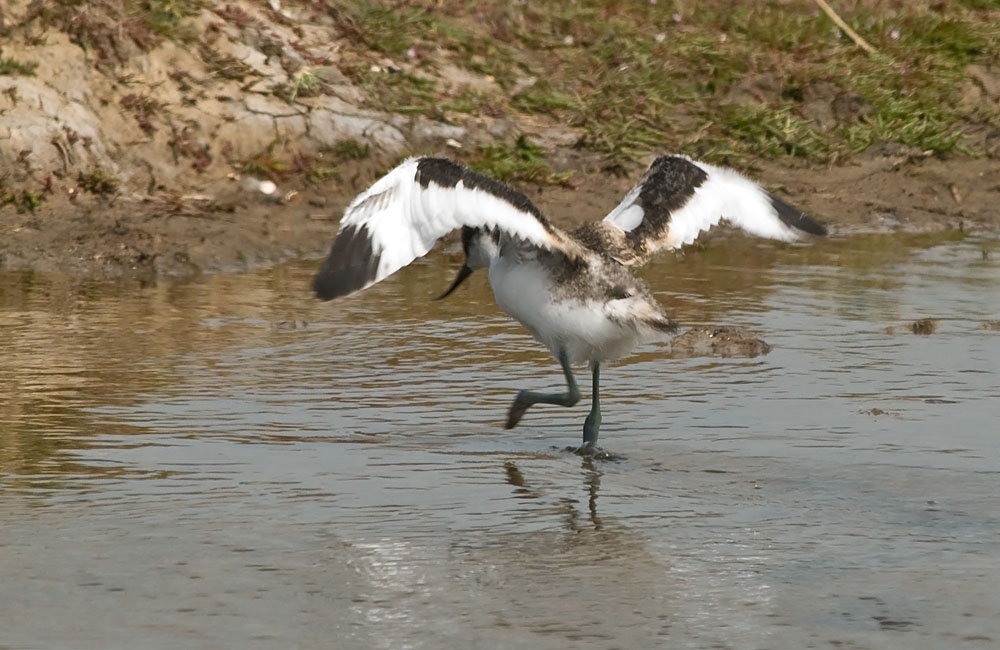
14th June. More vigorous wing flapping now. Showing the markings of the juvenile as it slowly starts to take on it's adult form.
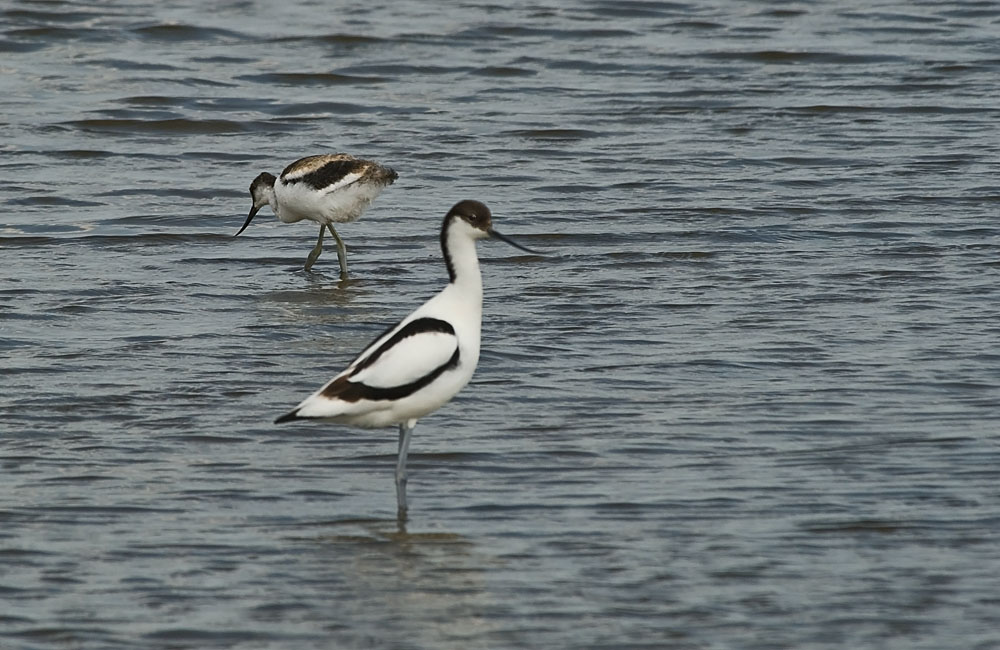
14th June. But still a fair way to go before becoming a true adult as this view shows.
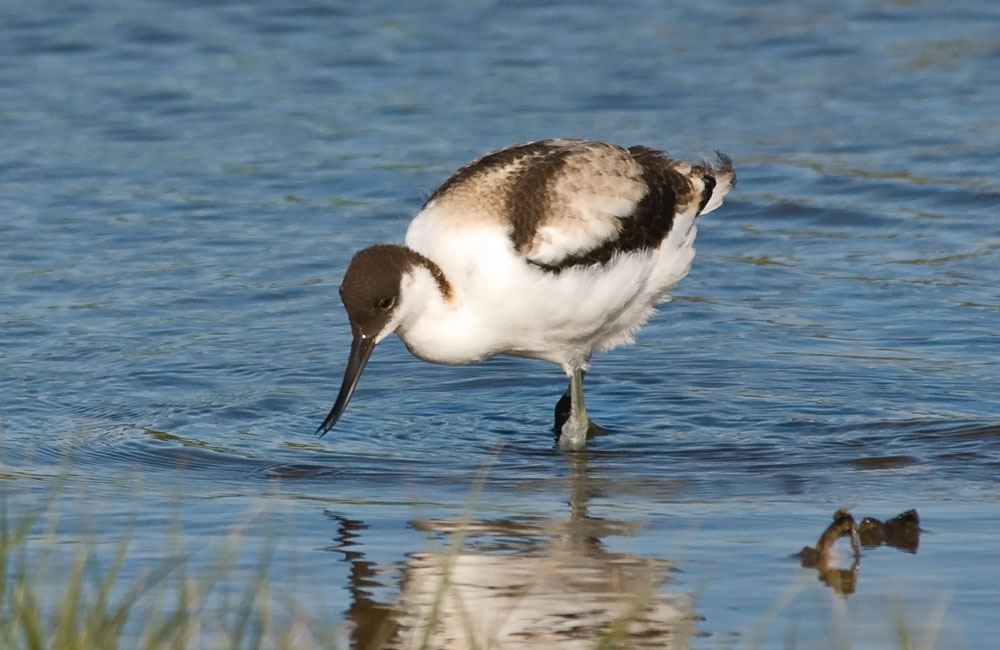
18th June. A few days later and this beautiful bird continues to develop along with it's three siblings who have all survived this far. With no small thanks to their incredibly attentive parents.
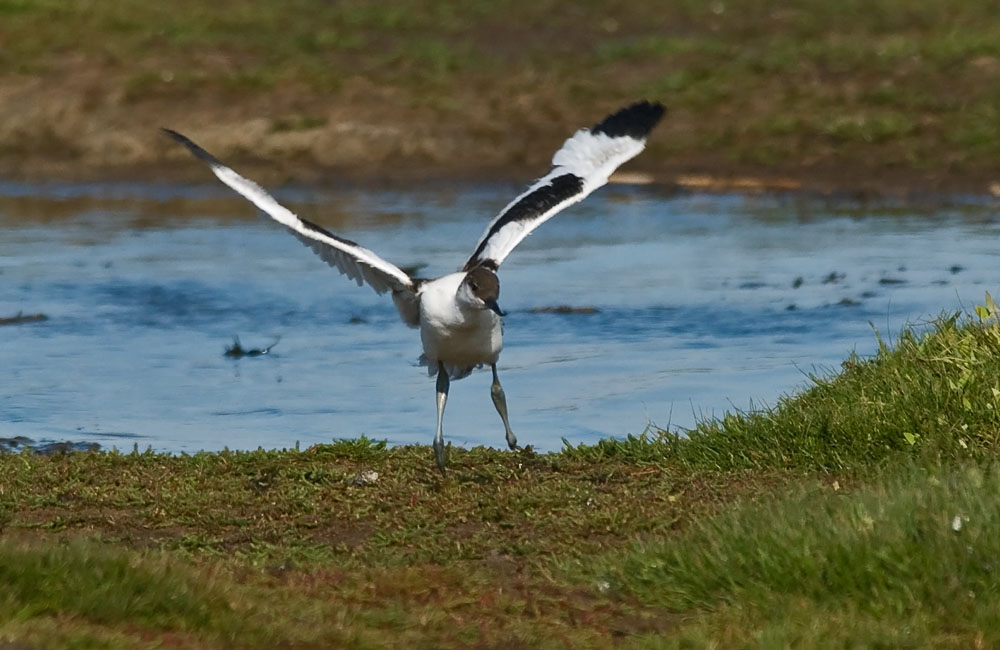
18th June. One of the Juveniles just gets airborne. The first time I've seen one do that. Helped today by a strong Westerly breeze
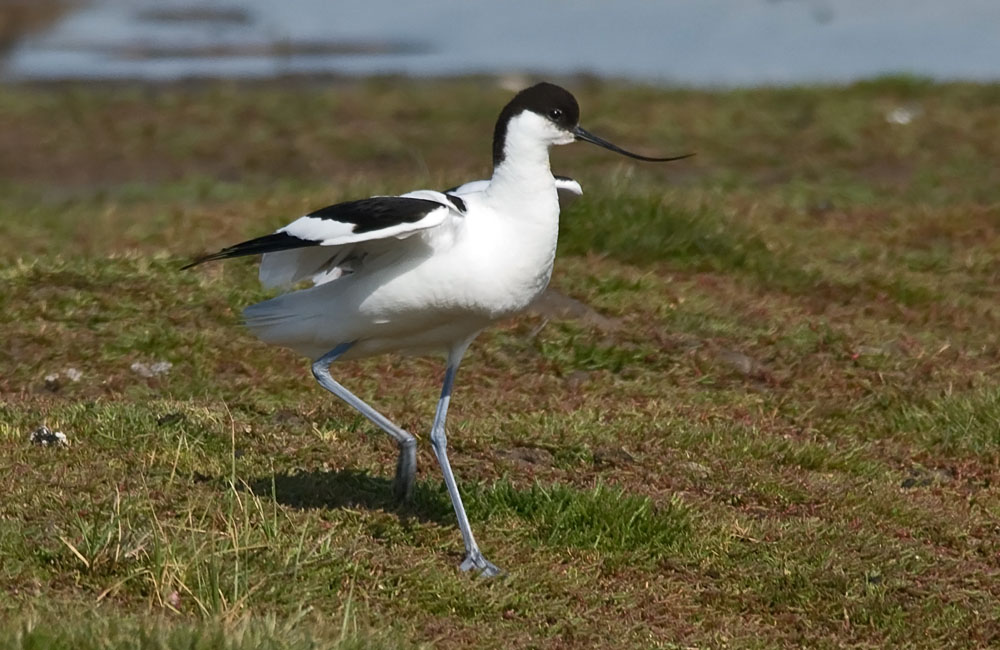
18th June. One of the adults returns from chasing off a black backed gull. The Juveniles may be getting bigger, but the risk of predation is still present.
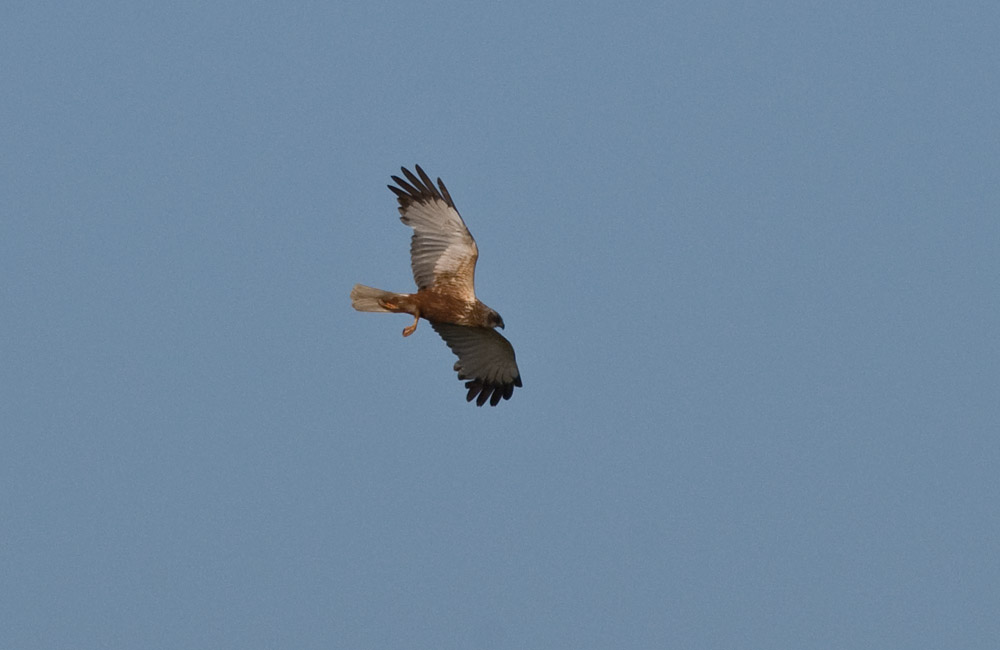
18th June. The need for such zealous protection by the adults becomes clear as this Marsh Harrier patrols the sky over the Marsh.
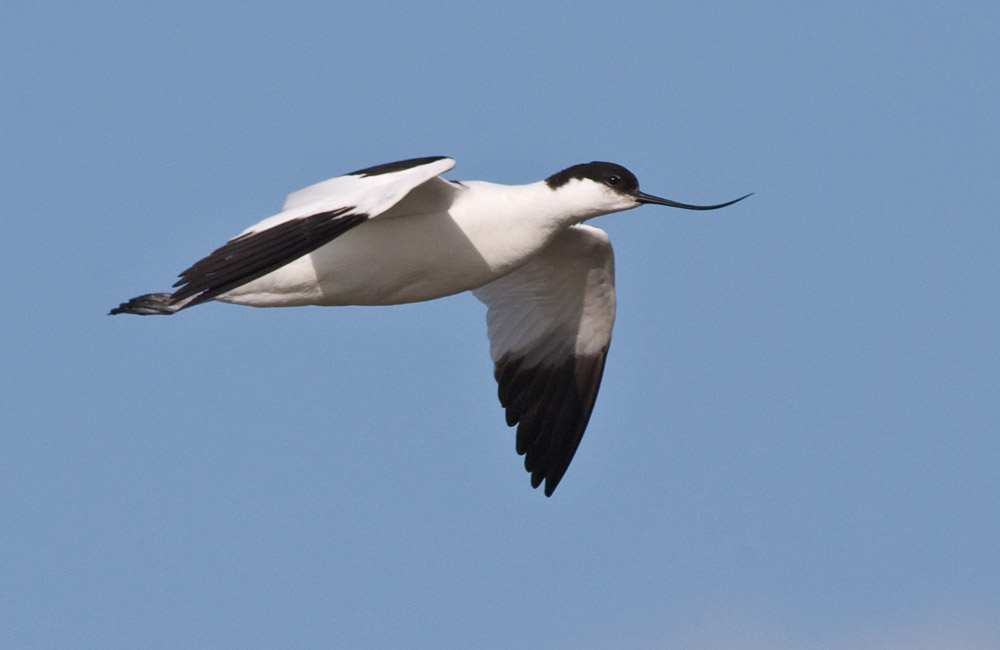
18th June. Up goes one of the adults to see off this intruder. They seem to rank potential predators in some sort of order as for a Marsh Harrier the Avocet got airborne when one was crossing the sea wall 300 metres away. Whereas lesser threats were only responded to when they were a lot closer.

18th June. No messing here. A direct attack by the Avocet saw the Marsh Harrier leave the area very soon after.
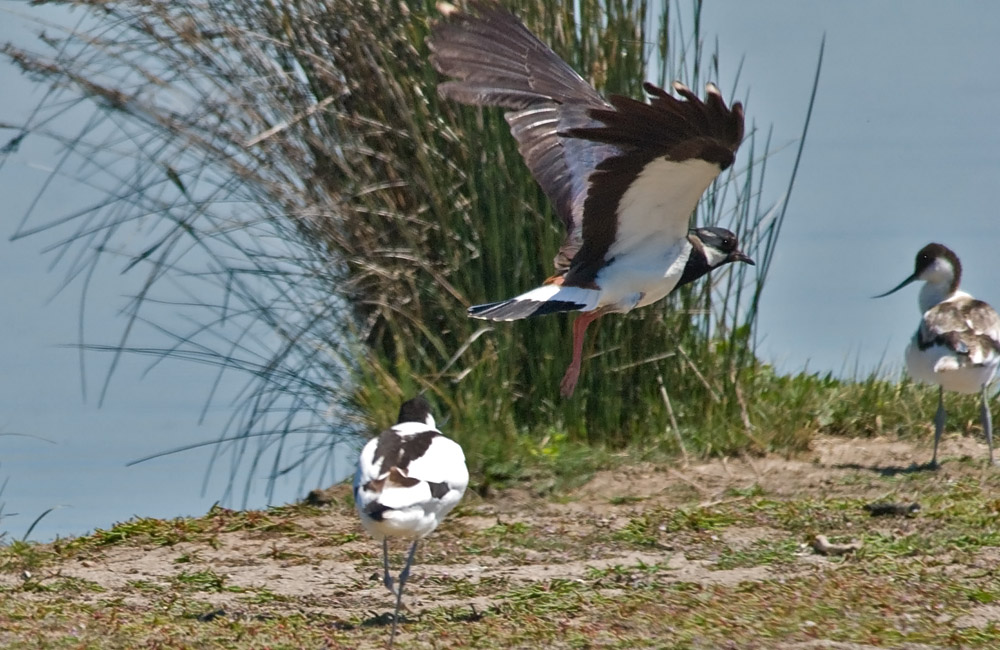
26th June. Towards the end of June and the Juvenile Avocets are close to being ready to leave their nursery area and join the main flock. But intruders are still not welcomed by the all seeing adults, and an inquisitive Lapwing is sent on it's way.
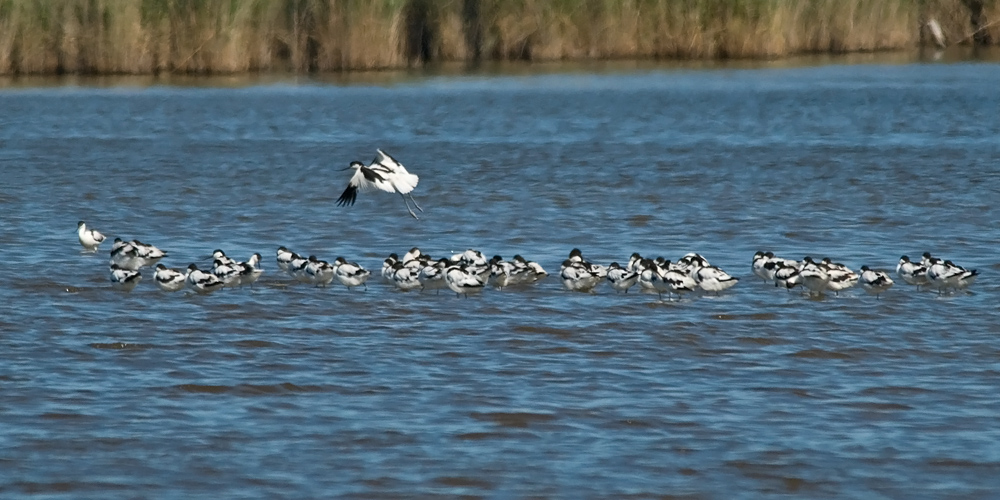
4th July. An appropriate date for me to go to Oare to see that the Avocet nesting and nursery area of the previous eleven weeks or so was now empty. The youngsters had become independent and had no doubt, (from other reports), joined the main flock on the East Flood of the Reserve. There was a tinge of sadness for me to lose contact with those lovely birds. But a lot of pleasure in knowing those two tenacious adults had brought the four youngsters through from eggs, chicks and on to maturity as fledged youngsters able to take their place in what became a 200 strong flock in Autumn of 2011.
Copyright of all images and all text on this web site belongs to Bryan Benn